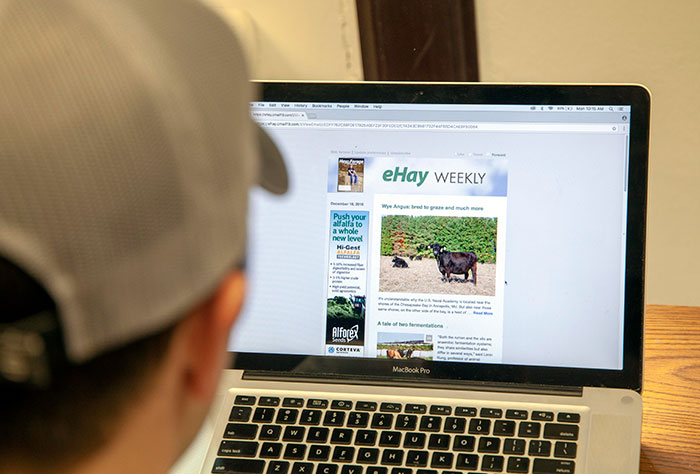
Just in case reading eHay Weekly wasn’t on your Top 10 “to do” list every Tuesday morning of the past year, here’s a chance to catch up with the most read articles that came through your inbox during 2018. Looking ahead to 2019, we will once again strive to bring you relevant forage production and marketing information each week.
In the order by when they appeared, here are eHay Weekly’s Top 10 from 2018:
Though often tried, rarely does seeding alfalfa after or into alfalfa result in a successful outcome.
March 6
Turning the forage world upside down
In this article, we discuss tannin-containing forages and how they may someday provide a huge economic and environmental boon for livestock agriculture. In some cases, they already are. March 20
Checking in on farm custom rates
The annual review of custom rates from states that compile such information is one of our most popular reads every year. March 27
Far too much hay is wasted and lost because of the way round bales are stored outside. It’s a simple fix. April 3
The disappearing sickle bar mower
In this article, we examine why the sickle bar mower is approaching extinct species status. April 17
Round bale binding results are in
This South Dakota State University survey set out to learn how haymakers are binding and feeding their round bales. April 24
Yikes! Hay stocks plunge 36 percent
Going into the 2018 haymaking season, hay stocks in the U.S. were well below the previous year. Missouri, for example, was down over 60 percent. May 15
The Top 7 factors for quality hay
This article summarized comments made by Dennis Hancock, University of Georgia Extension forage specialist, during an Alabama Forage Focus webinar. June 26
Duarte Diaz, University of Arizona Extension dairy specialist, discusses why relative feed value (RFV) has run its useful course as a hay quality metric. November 6
This is happening much too often
Following the death of yet another agricultural worker to a silo face collapse, this article serves as another reminder to make sure employees are trained on the inherent dangers of working around silage bunkers and piles. December 11

